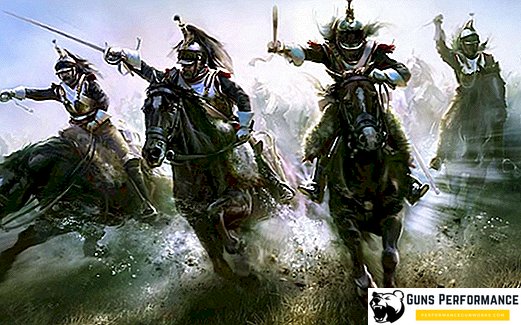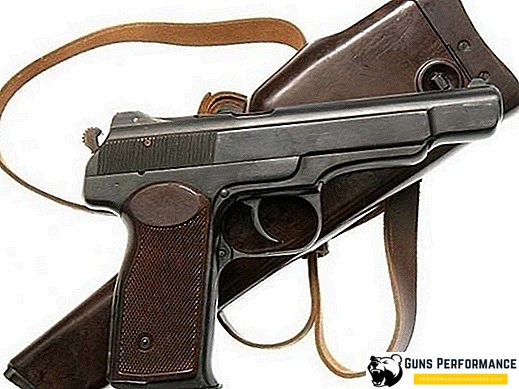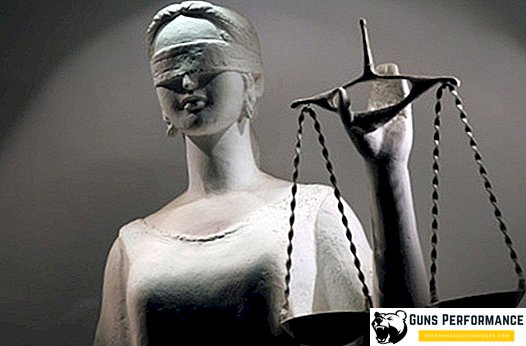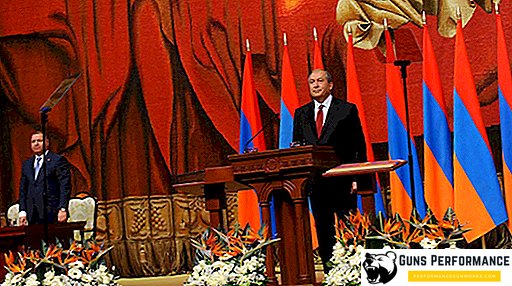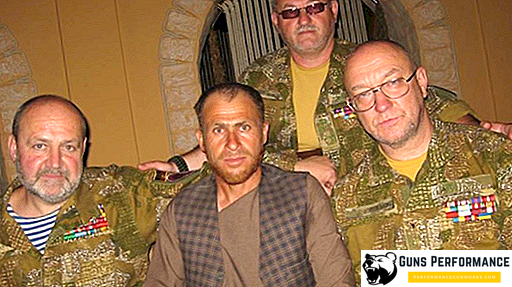Colombia is a presidential republic. The head of state is elected for a four-year term by universal secret ballot. He forms the government and heads it. Currently, Colombian President Juan Manuel Santos Calderon, elected in 2010, has been in office for two terms. From August 2018, Ivan Duque Marquez, who won the elections in 2017, will be the head of state.
The history of the formation of the Colombian state and its colonial period
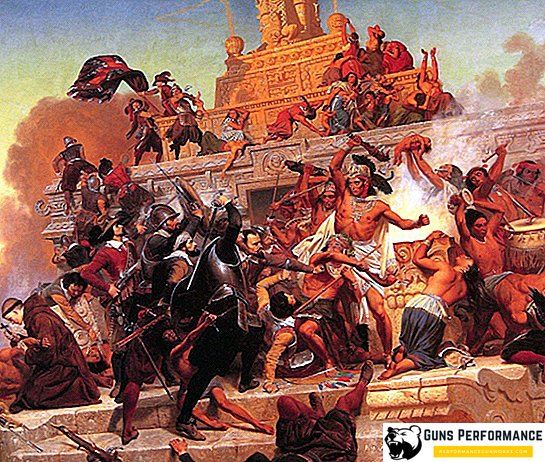
The territory of modern Colombia began to be inhabited by people in ancient times. From about the middle of the first millennium BC, Indian tribes lived here:
- Chibcha;
- Aravaki;
- Caribbean
Before the beginning of the Spanish colonization, the Chibcha-Muiski Indians formed several states, which were ruled by the rulers, who inherited their power.
In 1499, Spanish conquistadors appeared in Colombia, their main task in the new lands was:
- Looting of indian states;
- Search for gold and silver deposits;
- Capture of slaves and fertile lands of local tribes.
Spanish officials were interested in the speedy establishment of uninterrupted supply of resources from the colony to the metropolis.
By 1533, the first small port cities, Cartagena and Santa Marta, were built in the territories of modern Colombia. These strategic points became real military bases for the Spanish troops, which began advancing towards the Central Andes along the Magdalena River. Most of the local tribes were conquered and destroyed, although many tribes of lianos and selva remained unconquered until the end of the era of the Spanish colonization. In 1538, the Spaniards founded the city of Santa Fe de Bogota, which became the capital of the Spanish state of New Granada.
The history of the Spanish colony went through a number of periods:
- Until 1549 she was officially subordinate to the ruler of Peru;
- In 1549, New Granada became known as Audiencia, which gave her the right to independently decide some judicial and administrative issues;
- After some time, the audiencia received the status of general captaincy;
- In 1718, the country won the right to be called a separate vice-kingdom.
In addition to the territories of modern Colombia, the lands of Venezuela, Panama and Ecuador have entered New Granada.
The new vice-kingdom developed according to the typical pattern of the Spanish colonies in South America:
- The highest social status in the kingdom was enjoyed by purebred Spaniards who came from Europe. They occupied most of the responsible posts in New Granada, enjoyed economic and political privileges;
- Creoles were considered second in importance. In South America, this was the name given to all descendants of Europeans born in the Spanish colonies. Their economic and political rights were high, but inferior to pure-blooded Spaniards;
- Metis even compared to the Creoles had limited rights. But among them there were often rich merchants and planters - the legalized children of the Spaniards from their Indian or Negro slaves.
At the lowest level of social and economic importance were the indigenous inhabitants of Nova Granada and African slaves, massively imported to South American plantations.
In 1701 in Europe began a serious war for the Spanish inheritance. Centralized power in the colonies was weakened. In Spain, the Bourbons came to power, and King Philip V changed the principle of control of the overseas territories in Latin America. The Chamber of Commerce was abolished, and the High Indian Council, which has great authority, is severely limited in its powers.
The struggle for the independence of the colony and the role of Bolivar in it

At the end of the 18th century, the national liberation movement began to become more active in the country. The local aristocracy and the bourgeoisie were dissatisfied with their subordinate position, since Spain defined all the trade schemes in New Granada. Napoleonic wars began in Europe, and in Bogota the local Creole aristocracy declared their country independent, taking advantage of the overthrow of the Spanish king. Power was handed over to the military junta, which was supposed to rule until King Ferdinand got his throne back.
Having the power in their hands, the local elite immediately divided into several factions, each of which saw its own way of further development of the state. By the beginning of 1811, there were serious contradictions between the centralists and the federalists, which threatened to turn into armed clashes and even unleash a civil war. The leaders of both parties managed to agree among themselves and prevent open clashes. In 1811, they entered into negotiations among themselves and created the Confederation of the allied provinces of New Granada.
By the beginning of 1812, Simon Bolivar began to openly agitate the aristocracy and the bourgeoisie of the provinces, so that they demanded complete independence from Spain. It turned out that the friction between the parties is too deep for a united front. Meanwhile, Napoleon was defeated, and power returned to the Spanish king Ferdinand VII. He immediately demanded that his former colonies recognize the power of the metropolis. The local aristocracy has already managed to understand the advantages that independence gives them. The demands of the Spanish crown were rejected, and Ferdinand immediately sent his punitive expeditionary force to New Granada.
The local army and militia could not resist the Spanish veterans who went through the crucible of the Napoleonic wars, in 1816 Bogota was captured by the Spaniards. After that, the Spaniards, with their usual cruelty, began to destroy all the leaders and participants of the independence movement. Feeling that the Spanish army would not stop until it arrested all the participants in the resistance, the Creoles united under the leadership of Simon Bolivar. By 1819, the Colombians were able to assemble a strong army that defeated the royal troops at Boyac, near Bogota. The victory marked the construction of an independent state.
Formation of the Republic of Colombia and government reform

After the end of the war of independence, the colonial regime fell. At the end of 1819, the Federal Republic of Great Colombia emerged, it was part of New Granada and the captaincy general of Venezuela. The head of a huge united state was Simon Bolivar. The political development of the country had a number of features:
- In 1821 a new constitution appeared;
- In 1832, the main document of the country was changed to combat the economic crisis after the collapse of Great Colombia;
- In 1853, the country adopted another constitution, which was distinguished by its democracy;
- In 1886, the country again changed its name, becoming the Republic of Colombia.
In 1899, the liberals tried to seize power by force. The coup d'état turned into a full-scale civil war that lasted until 1902. According to official data, this historical episode cost the country about 100,000 human victims. In fact, this number does not include peasants and Indians who suffered from both sides of the conflict.
In 1903, the government of the United States of America provoked a separatist uprising in the Isthmus of Panama. Entrepreneurs in the province of Panama colluded with the US government over the construction of the Panama Canal, as this guaranteed them huge profits. The supported separatists were able to fight back the Colombian army, after which Panama became an independent state.
Colombia and its development in the XX century

In 1904, General Reis became president. During his reign, conservatives and liberals were able to agree among themselves, creating a coalition government. Conservatives dominated the policy of the state, as the president was inclined to strengthen and centralize his power. The economic situation in the state began to gradually normalize, but the crisis of 1929 again weakened the economy of Colombia, which existed at the expense of foreign investment.
The most famous president of Colombia in the first half of the 20th century was Alfonso López Pumarejo, elected twice, in 1934 and 1942. Thanks to this president, Colombia has undergone a number of reforms:
- The outdated constitution of the country has been changed;
- A number of socio-economic laws have been created that protected the rights of workers;
- Education in the country became free, schools were built all over Colombia;
- Anti-clerical laws have been passed, and the government has managed to establish official relations with the Vatican.
In 1948, the calm development of the republic was disrupted by another bloody clash between conservatives and liberals. The official reason for the conflict was the assassination of the leader of the liberals, Gaitan. Immediately, riots broke out in all the major cities of Colombia, which gradually grew into a civil war that officially killed 300,000 people.
In 1949, the conservative party won the election, G. Castro became president. During his reign, the state lost a number of its democratic freedoms:
- A dictatorship has been established in the country;
- Constitutional freedoms were suspended;
- Congress dissolved;
- Opponents of the new presidential regime were ruthlessly pursued and arrested.
In 1953, another coup d'état took place in Colombia, and General Gustavo Rojas Pinilla came to power. He could not normalize the crisis situation in the country and in 1957 was overthrown.
In 1968, a constitutional reform took place, the principles of the formation of power, proposed by the National Front until 1974, were extended. During the work of the National Front, the government managed to carry out several progressive reforms, the most necessary of which was the agrarian one.
The development of Colombia in modern times

In the early 1990s, the political situation was extremely unstable:
- The struggle against guerrilla factions continued;
- The government fought large drug cartels whose annual turnover reached more than $ 20 billion;
- Inflation was high;
- Unemployment has reached a critical point.
The fight against drug cartels was unsuccessful, so the Colombian government turned to the United States for help - the large drug barons were arrested.
At the beginning of the XXI century, the country managed to get a loan from the International Monetary Fund. The domestic political and economic situation in Colombia continued to deteriorate. The rebel movement became a real military force, and the military immediately cracked down on those who were caught in connection with the rebels, increasing tensions in the region. After the inauguration of the president-elect Alvaro Uribe Vélez elected in 2002, all attempts to establish a peaceful dialogue with the Revolutionary Armed Forces of Colombia ceased. The head of state argued that the government would not negotiate with terrorists to be ruthlessly destroyed.
In 2005, Colombia and the United States were able to agree on a number of joint military operations against the guerrillas, which previously controlled separate administrative regions of the country. Revolutionary armed forces of Colombia were rejected in the most inaccessible and sparsely populated areas of the state, the economic situation in the country began to gradually improve.
In 2006, Alvaro Uribe Velez was reelected for a second term, gaining more than 62% of the vote. A year later, the Columbia plan, developed jointly with the United States, was revised by the country's new authorities. Now he was sent to modernize the armed forces of the state so that it could quickly and effectively deal with drug cartels and insurgent groups on its own. But the problem with the illicit trade in cocaine did not dare; in the new plan, the fight against drug cartels was placed in ninth place.
In the 2010 election, Juan Manuel Santos Calderon became president of Colombia. Although during the election campaign he promised to follow the political course of Alvaro Uribe, immediately after the inauguration, the President officially announced that he would follow his course.
The status and responsibilities of the President of Colombia and the list of heads of the republic since 1886

The head of Colombia symbolizes the national unity of the country. List of his rights and obligations:
- The appointment and removal from office of cabinet members, which is formed by the president;
- Conducting international affairs, concluding treaties with leaders of other states. The prerequisite is that these treaties should not contradict the current constitution;
- The head of Colombia has the right of legislative initiative, but presidential orders do not have the force of legislation;
- Control over the work of any local and legislative authorities;
- The president can create new governing bodies, as well as abolish or merge existing ones;
- Announcement of annual amnesties, pardon of criminals;
- The conclusion of peace treaties and the right to declare war.
Although formally the President of Colombia is the supreme commander of the armed forces, the local military is a special force that can afford not to obey the instructions of the president, which has been repeatedly proved by military coups.
Since 1886, the following military and civilian politicians have visited the post of President of Colombia:
- 1886-1887 - Jose Serano. After the formation of the republic, he continued his authority. the president;
- 1887 - Rafael Molledo. I was able to restore order in the republic;
- 1888 - Rafael Molledo. Was forced to leave due to illness;
- 1888-1892 - Carlos Mallarino;
- 1892-1894 years - Rafael Molledo. He died at his post;
- 1898-1900 - Manuel Sanclemente. Was overthrown;
- 1904-1909 - José Rafael Priesto. In his youth, he went to the jungle for trade and intelligence purposes, for about 10 years he had been trading in cinchona bark, encouraging the development of industry in the region;
- 1910-1914 - Carlos Restrepo. He was in office until the end of his term, which is rare for Colombia at the time;
- 1914-1918 - José Ferreira;
- 1918-1921 - Marco Suarez. He himself resigned;
- 1922-1926 - Pedro Ospina Vazquez;
- 1926-1930 - Miguel Mendez. In 1929 he introduced martial law in the country;
- 1930-1934 - Enrique Herrera;
- 1934-1938 - Alfonso Pumarejo. He enjoyed great respect among the workers and peasants;
- 1938-1942 - Eduardo Montejo. Removed the catholic church from education management;
- 1942-1945 - Alfonso Pumarejo;
- 1946-1950 - Louis Ospina Perez. Won the election due to a split among the liberals;
- 1950-1951 - Laureano Gomez Castro. Left post after a heart attack;
- 1953-1957 - Gustavo Rojas Pinilla. He became president after a military coup;
- 1958-1962-Alberto Camargo. He began to implement agrarian reform and established relations with the United States;
- 1962-1966 - Guillermo Valencia Muñoz. During his reign, economic and social reforms were carried out, schools were built, oil production increased;
- 1966-1970 - Carlos Lleras Restrepo. He continued the reforms of the previous president. Thousands of landless peasants were able to get land plots;
- 1970-1974 - Misael Pastana Borrero. The years of his reign are marked by a severe economic downturn;
- 1974-1978 - Alfonso Lopez Mickelson. The son of President Pumarejo, author of the novel The Selected;
- 1978-1982 - Julio Cesar Turbai Ayala. An excellent manager, because even during the economic crisis that hit the countries of Latin America, he managed to achieve economic growth;
- 1982-1986 - Belisario Betancourt Quartas. The famous reformer tried to settle the conflict with the armed partisan formations;
- 1986–1990 - Virhilio Barco Vargas. As an economist, he tried to fight poverty, negotiated with drug cartels and rebels. After the end of the presidency, became ambassador to England;
- 1990-1994 - Cesar Augusto Gaviria Trujillo. He carried out a number of social and economic reforms, during which the famous drug lord Pablo Escobar was arrested;
- 1994-1998 - Ernesto Samper Pizano. Economist and senator, whose popularity quickly faded away. He was suspected of receiving a large bribe from one of the drug cartels;
- 1998-2002 - Andrés Pastarana Arango. He was mayor and senator, suffered from drug cartels, one of whom kidnapped him in 1988;
- 2002-2010 - Alvaro Uribe Velez. I was remembered as an implacable fighter with drug cartels and partisans. 18 attempts were made on him;
- 2010-2018 - Juan Santos Calderon. In 2016, he received the Nobel Prize for his contribution to ending the civil war in the region.
С 7 августа 2018 года президентом Колумбии будет Иван Дуке Маркес, который уже выиграл выборы.
Резиденция президента Колумбии

Президентский дворец Каса де Нариньо на русский язык переводится как "Дом Нариньо". Здание расположено в столице Колумбии, Боготе. Резиденция названа так в честь Антонио Нариньо, поскольку дом расположен на месте, где родился знаменитый политик. Именно он стал известным революционером и впоследствии губернатор-президентом Свободного Государства Кундинамарка. После смерти Антонио дом не привлекал правительство Колумбии около 60 лет. В октябре 1885 года его купили по приказу президента Рафаэля Нуньеса, чтобы сделать там резиденцию главы государства.
Сейчас в этом здании, реконструированном в 1908 году архитекторами Хулианом Ломбаной и Гастоном Леларжем, находится приёмная президента Колумбии. Внутри дворца множество произведений искусства и старинной мебели. В саду комплекса есть обсерватория, построенная в 1802 году монахом Фраем Доминго де Петресем.


